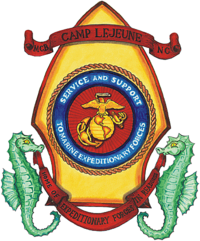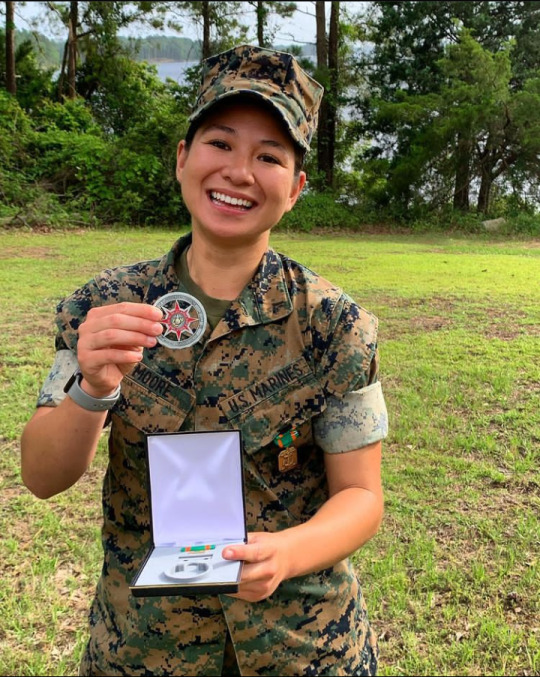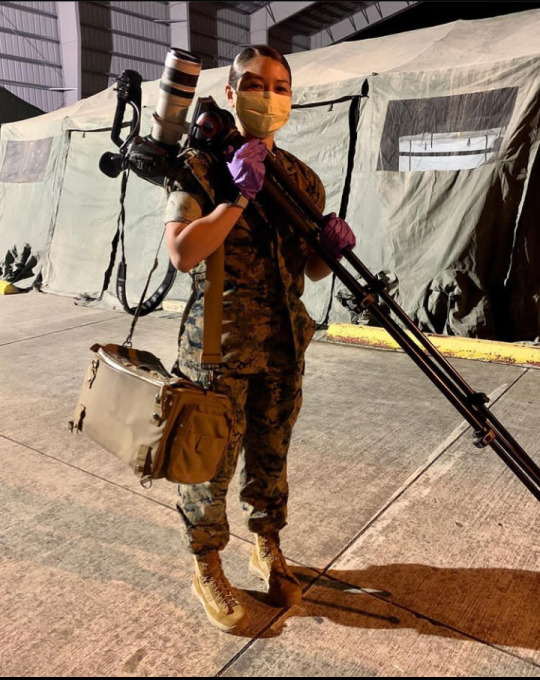Don't wanna be here? Send us removal request.
Text
Camp Lejeune and Onslow County have come a long way since September 1941 when the 1st Marine Division set up camp in the middle of a sandy pine forest along the Atlantic Seaboard.
Units have trained and deployed around the globe to keep the peace and fight wars. A tobacco barn, farm house and temporary tent cities have grown into a 244-square mile premier military training facility. A bond has grown among the Marines, sailors, Coast Guardsmen, family members, military retirees and civilians who have planted the seeds that are making Onslow County grow at an unprecedented rate.
The Camp Lejeune story began in 1940. World War II had been raging in Europe for more than a year and military planners were posturing forces for America's eminent entry to the fight. The need for an East Coast amphibious training facility was answered as the Department of the Navy purchased an initial 110,000-acre tract of land. With close proximity to ports at Wilmington and Morehead City, Lejeune was a logistical gem. When planners added the remote pine forests and miles of beach, the value of Camp Lejeune as a home training base for Marines was unbeatable.
On April 5, 1941 Congress authorized over 14 million dollars for the construction of the base. On May 1, 1941, Lieutenant Colonel William P.T. Hill was ordered by the 17th Commandant, Lieutenant General (then Major General) Thomas Holcomb, to establish and assume command of the base, then known as Marine Barracks New River, N.C. Hill and quartermaster, Brigadier General Seth Williams, were instrumental in the layout and design of the base. Hill's original headquarters was located at Montford Point; in August 1942, it was moved to Building 1 at Hadnot Point where it remains today.
Near the end of 1942, the base was named Marine Barracks Camp Lejeune in honor of the 13th Commandant and Commanding General of the 2nd Army Division in World War I, Major General John A. Lejeune. Camp Lejeune's value to the Corps in World War II was evident through the contributions of Marines trained or based here. In 1944, it was renamed Marine Corps Base Camp Lejeune.
The value of this land to the Marine Corps has grown over the years as men and women have trained to fight wars in the Pacific Islands, Korea, Vietnam, Kuwait, Afghanistan and Iraq. Camp Lejeune has also proven invaluable for the training and deployment of Marines for such actions as peacekeeping in Lebanon, tactical recovery of aircraft and personnel missions, drug interdiction missions and a host of noncombatant evacuation operations. The idea of Special Operations Capable Marine Expeditionary Units was born at Camp Lejeune and Marines here continue to make strides toward the future of warfare in such areas as urban and riverine operations. Camp Lejeune and the satellite facilities at Camp Geiger, Camp Johnson, Courthouse Bay, Stone Bay and the Greater Sandy Run Training Area have an historic value that goes beyond their national strategic importance.
Camp Johnson, which now plays a crucial role in the follow-on training of thousands of Marines every year, was the first training base for black Marines. Originally known as Montford Point, black Marines attended boot camp here while the nation was still racially segregated. After the walls of segregation came down, it was named in honor of Sergeant Major Gilbert H. “Hashmark” Johnson in 1974 and Marine Corps Combat Service Support Schools was located there. Outside the gate of Camp Johnson stands a solemn tribute to Marines and sailors who gave their lives keeping the peace in Lebanon. The Beirut Memorial is the site of an annual commemoration of the tragic October 1983 bombing of Battalion Landing Team 1/8's headquarters in Beirut. A visit to the Jacksonville area isn't complete without a stop at this memorial.
Camp Geiger is a vital training center unto itself. With more than 24,000 Marines undergoing Marine Combat Training at the School of Infantry every year, it is a hub of activity that mirrors the original days in 1941 when the 1st Marine Division prepared to ship-out to the Pacific. Entrenched into the Marine warrior ethos is “every Marine is a Rifleman,” and it is at Camp Geiger where Marines learn and develop their warfighting skills before they attend their secondary schools to learn their military occupational skill.
To help prepare warfighters for combat and humanitarian missions abroad, Camp Lejeune takes advantage of 156,000 acres, 11 miles of beach capable of supporting amphibious operations, 34 gun positions, 50 tactical landing zones, three state-of-the-art training facilities for Military Operations in Urban Terrain and 80 live fire ranges to include the Greater Sandy Run Training Area. Military forces from around the world come to Camp Lejeune on a regular basis for bilateral and NATO-sponsored exercises.
The base and surrounding community is home to an active duty, dependent, retiree and civilian employee population of nearly 150,000 people. The base generates almost $3 billion in commerce each year, coming from payrolls and contracts to support the structure required to train and equip our modern Marines.
Some services available aboard Camp Lejeune include: childcare, shopping, education, family support, hunting and fishing, dining, boating and swimming.
Some facilities on base include banks and credit unions, the commissary, the library, hobby shops, fitness centers, the beach, theaters and more.
From the supporting infrastructure, a tradition of excellence in doing day-to-day business has evolved. From environmental programs that include a state-of-the-art landfill and water treatment system to quality of life programs that ensure Marine families are taken care of, Camp Lejeune stands out as a superior military base.
Camp Lejeune is a seven-time recipient of the Commander-in-Chief's Award for Installation Excellence. This award recognizes the base on a Department of Defense level for effectively managing assets and developing quality programs to accomplish the mission of providing expeditionary forces in readiness. The Marines, sailors, Coast Guardsmen and civilian Marines who provide for the efficient management of Camp Lejeune's assets strive to ensure even grander goals are realized in the future.



8 notes
·
View notes
Text
Marine Corps Base1 Camp Lejeune Marine Corps Base Camp Lejeune[1] (/ləˈʒɜːrn/)[2] is a 246-square-mile (640 km2)[3] United States military training facility in Jacksonville, North Carolina. The base's 14 miles (23 km) of beaches make it a major area for amphibious assault training, and its location between two deep-water ports (Wilmington and Morehead City) allows for fast deployments.
Marine Corps Base Camp LejeuneOnslow County, in Jacksonville, North Carolina
MCB Camp Lejeune Insignia
Coordinates34°35′N 77°20′W TypeMilitary baseSite informationControlled byUnited States Marine Corps history Built:1941 In use1941–present informationGarrison II Marine Expeditionary Force
Marine Special Operations Command
The main base is supplemented by six satellite facilities: Marine Corps Air Station New River, Camp Geiger, Stone Bay, Courthouse Bay, Camp Johnson, and the latest addition to the facility, the Greater Sandy Run Training Area. The Marine Corps port facility is in Beaufort, at the southern tip of Radio Island (between the NC State Port in Morehead City, and the marine science laboratories on Pivers Island in Beaufort). It is military property, but is only occupied during military port operations.
Resident commands
II Marine Expeditionary Force
Marine Corps Forces Special Operations Command
2nd Marine Division
2nd Marine Logistics Group
2nd Marine Expeditionary Brigade
22nd Marine Expeditionary Unit
24th Marine Expeditionary Unit
26th Marine Expeditionary Unit
2nd Reconnaissance Battalion
2nd Intelligence Battalion
Marine Corps Installations East
Marine Corps Engineer School
United States Marine Corps School of Infantry
Marine Corps Combat Service Support Schools
Reserve Support Unit
Naval Hospital Camp Lejeune
Field Medical Training Battalion (FMTB)
Joint Maritime Training Center (USCG)
Marine Raider Regiment
Marine Special Operations Support Group
Marine motor detachment, New River Barracks, 19





6 notes
·
View notes
Text
#marines got the vibes,#camp lejeune,#your fav CPL.....





8 notes
·
View notes